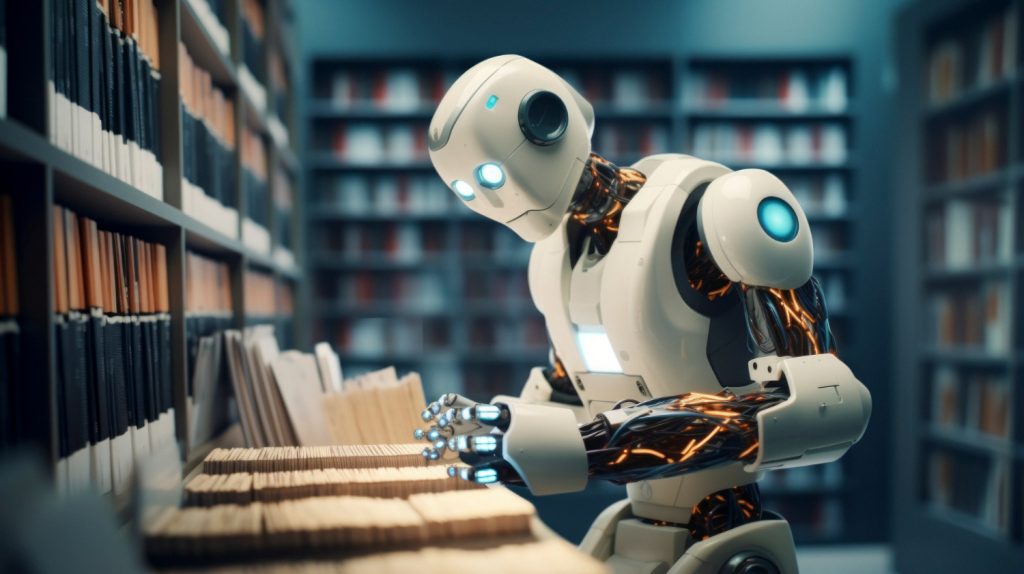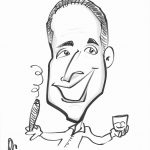
Artificial Intelligence and Intellectual Property: Discovering the Future of Inventions and Patents
Introduction
The landscape of intellectual property, especially in the eyes of various patent offices around the world, has changed vastly over the past twenty years.
Harkening back to the early 2000’s, most people probably won’t remember much of the world was still primarily on paper.
In terms of on-line access, the Canadian Intellectual Property Office (CIPO) was considered sophisticated and had (for the time) excellent on-line offerings.
For example, back then CIPO offered on-line patent and trademark filings, as well as reasonably good quality databases.
Although one can argue the underpinnings of artificial intelligence technology were in place at that time, the reality is that by today’s standard twenty years ago was a world-away.
Today artificial intelligence has made its way pervasively into our lives, and that includes the world of intellectual property.
Regardless of whether one considers a topic like inventorship, or the act of filing an application, or even conducting database searches – artificial intelligence is clearly here and in the open.
Artificial intelligence has emerged as a transformative force across various industries, revolutionizing the way we work, communicate, and innovate.
As artificial intelligence continues to advance at an unprecedented pace, it raises intricate questions about intellectual property rights, particularly in the realm of patents.
This article examines the intricate and difficult relationship between artificial intelligence and intellectual property, focusing on a select few recent developments, court rulings, and policy considerations that are shaping the landscape.
This general overview is based mostly on the United States experience, but artificial intelligence is impacting intellectual property offices internationally.
Regardless the impact on local intellectual property offices, legislators in all countries are assuredly discussing and implementing artificial intelligence policies.
The Artificial Intelligence Inventor Debate
One of the most contentious issues in this debate is the following question:
Who can be considered the inventor of an artificially-intelligent-generated invention?
The case of DABUS, an artificially intelligent system that autonomously created two inventions, stirred considerable debate.
In this landmark ruling, the USPTO rejected pending patent applications, asserting that only a natural person could be granted patent rights.
At the time of writing, the full written opinion was available at this link:
https://cafc.uscourts.gov/opinions-orders/21-2347.OPINION.8-5-2022_1988142.pdf
This decision has far-reaching implications for the future of artificially-intelligent-generated inventions and has sparked discussions about the need for legislative reform.
However, those calling for legislative reform are typically pro-Government / pro-control / pro-mandate crowds.
Sober reflection on such a decision should readily make clear natural laws govern (and to a very limited extent protect or benefit) man – not machine or algorithm.
To invite machines and algorithms into a human legal system spells the beginning of the end (not that Pandora’s box hasn’t already been opened).
Recent Court Rulings and Policy Implications
Court rulings play a pivotal role in shaping the legal framework surrounding artificial intelligence and intellectual property.
Recent cases have provided important precedents and insights into how patent law is adapting to the era of artificial intelligence.
In that case of Thaler v. Hirshfeld, the Federal Circuit upheld the USPTO’s decision, emphasizing the importance of human inventors in the patent system.
This ruling reflects the current legal sentiment, but it also highlights the need for a broader conversation about inventors and the extent to which artificial intelligence should be eligible for patent protection.
Furthermore, the Group Of Seven (G7) nations’ recent agreement on an artificial intelligence code of conduct for companies signifies a growing awareness of the need to establish ethical and legal boundaries in the development and deployment of such technologies.
At the time of this writing, that code of conduct was discussed in the following article:
https://www.reuters.com/technology/g7-agree-ai-code-conduct-companies-g7-document-2023-10-29
This code of conduct apparently aims to balance innovation with societal and ethical considerations.
The code of conduct also underscores the pivotal role of policy in shaping the future of artificial intelligence and intellectual property.
The Role of Artificial Intelligence in Accelerating the Patent Process
Artificial intelligence’s impact on intellectual property extends beyond the question of inventorship.
This technology has also significantly expedited the patent application and review process.
Artificial intelligence-powered tools can analyze vast amounts of prior art, aiding examiners in assessing the novelty and non-obviousness of inventions, according to the United States Patent and Trademark Office (USPTO).
This has led to arguably more efficient and accurate patent examinations, reducing backlog and expediting the granting of patents.
At the time of the writing of this article, the comments of the USPTO reflected such thoughts in the Director’s blog, available at this link:
https://www.uspto.gov/blog/director/entry/with-artificial-intelligence-speeding-the
Challenges and Ethical Considerations
While artificial intelligence brings remarkable advancements, it also poses unique challenges to the traditional framework of intellectual property.
One major concern is the potential for artificial intelligence to generate inventions that lack human-level creativity or judgment.
Such concern in turn raises questions about the originality and inventiveness of such creations.
Moreover, issues related to bias and fairness in artificial intelligence-generated inventions must be addressed.
Artificial intelligence systems are trained on large datasets, which may contain biases inherent in the data.
This can lead to potential discrimination or exclusion in the inventions produced by that technology.
Striking a balance between promoting innovation and ensuring fairness is a complex challenge that policymakers, legal experts, and technologists are grappling with.
A suitable long-term and stable policy that will produce fairness for the largest number of people is unlikely.
Future Considerations and Recommendations
As the synergy between artificial intelligence and intellectual property evolves, there are several crucial considerations for policymakers, legal professionals, and innovators:
**Legislative Reform**
The DABUS case highlights the need not necessarily for legislative reform, but at least reflection.
Legislation or regulations must have an awareness of, and make clear pronouncements regarding artificial intelligence-generated inventions.
This could also involve establishing a legal framework for artificial intelligence as an inventor, defining ownership rights, and delineating responsibilities.
Recognizing artificially intelligent systems as inventors would, however, be an unwise decision at best, as this invites more questions and uncertainty.
Given recent international Government track-records for wisdom, it’s more than likely the acknowledging of artificial intelligence as an inventor is already a fait-accompli.
**Ethical Guidelines**
Clear ethical guidelines for artificial intelligence development and deployment in the context of intellectual property are imperative.
This includes addressing issues of bias, fairness, and transparency in AI-generated inventions.
**International Collaboration**
Given the global nature of artificial intelligence and intellectual property, international collaboration is vital, and is underway regardless of any objection.
Harmonizing standards and practices across jurisdictions will probably facilitate a coherent approach to regulating artificially intelligent-generated inventions.
**Continuous Monitoring and Adaptation**
Given the rapid pace of artificial intelligence advancement, continuous monitoring of legal and policy landscapes is essential.
Flexibility in adapting to new challenges and opportunities will be critical in ensuring a robust and fair intellectual property framework.
Conclusion
The convergence of artificial intelligence and intellectual property is reshaping the landscape of innovation and patents.
Recent court rulings, policy agreements, and technological advancements are pushing the boundaries of traditional intellectual property frameworks.
Navigating this evolving terrain requires a thoughtful and collaborative effort from policymakers, legal experts, and technologists.
Countries must ensure that the intellectual property system remains a catalyst for innovation in the age of artificial intelligence.
At the time of this writing, various source articles were available for review, including those at the following links:
Patents and AI inventions: Recent court rulings and broader policy questions
https://www.mdpi.com/2072-6694/14/10/2400
https://www.sciencedirect.com/science/article/pii/S0172219023000078
https://www.sciencedirect.com/science/article/abs/pii/S0172219018300814
https://www.reuters.com/technology/g7-agree-ai-code-conduct-companies-g7-document-2023-10-29/
https://www.ncbi.nlm.nih.gov/pmc/articles/PMC7366817/
https://www.uspto.gov/blog/director/entry/with-artificial-intelligence-speeding-the

Readers of this article should be aware that over time the above links will naturally expire and become non-functional.
Printouts and PDF records are recommended for anyone looking to historically preserve information presented in the above links.
None of the information in any of our articles constitutes legal advice, nor does it constitute advice as registered patent and trademark agents.
Pnc IP Group bears no responsibility for the accuracy of third party links.
All legislation, regulations, practice notices and practice manuals quoted or referenced in any article are quoted or referenced as they exist at that time.
Pnc IP Group bears no responsibility for updates and changes to legislation, regulations, practice notices, and practice manuals.
All readers accept these articles as being written accurately for the time they were published, and understand that the accuracy and correctness of any article is affected by time, statutory and regulatory amendments, case law, and practice considerations.
All readers are forewarned to obtain independent legal advice and independent advice from registered patent and trademark agents.
Images for this article, including the feature image for this article were generously provided by licence through, created by, or hosted by Freepik.com.
AI Image generation by Vecstock via Freepik.com.
Visit our Services page to learn more about Pnc IP Group’s Patent services. If you have questions regarding the above, feel free to contact us.
Any patents, trademarks, or technologies referenced in this article are owned by their respective owners.
Questions regarding this article can be directed to Tapas Pain.
Pnc IP Group are licensed lawyers and registered patent and trademark agents with a history of serving the greater York Region, greater Toronto area since 2003.
Pnc IP Group is located in Vaughan, Ontario, and offers in-person visits by appointment.
Call us and book your appointment today, or speak with us by telephone anytime.
Your calls are always welcome, and never hesitate to ask us your questions.
These articles and opinions do not express or constitute legal advice.
You can also often find us on search engines like Google using any of the following search terms:
intellectual property lawyer Toronto, intellectual property law firm Toronto
patent filing services, patent application services, patent services Canada, patent lawyer Canada, patent lawyer Toronto, patent agent Canada
trademark application Canada, trademark lawyer Toronto, trademark lawyer Canada
You can also often find us on other search engines using any of the following search terms:
intellectual property lawyer Toronto, intellectual property law firm Toronto
patent filing services, patent application services, patent services Canada, patent lawyer Canada, patent lawyer Toronto, patent agent Canada
trademark application Canada, trademark lawyer Toronto, trademark lawyer Canada



